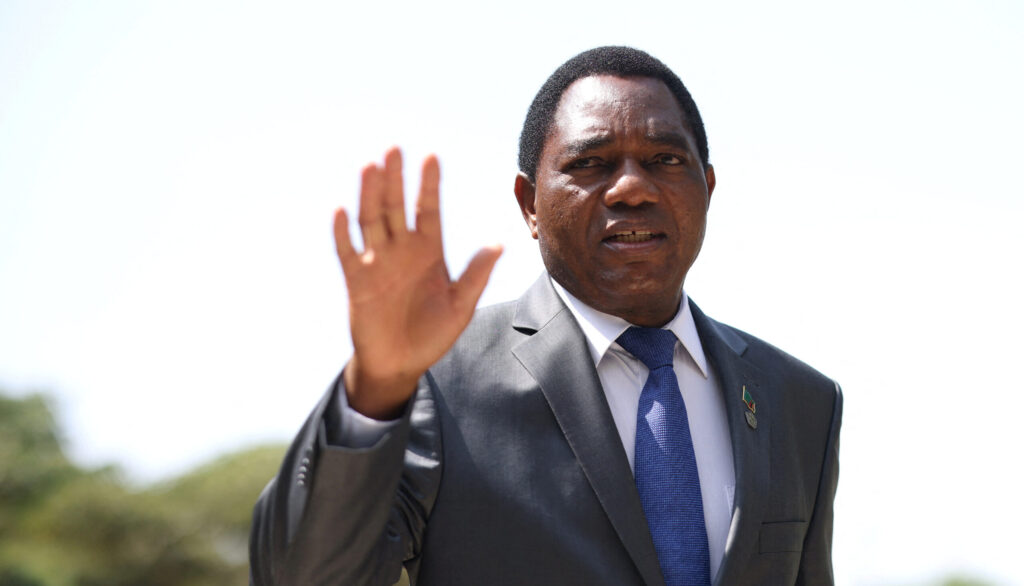
This originally appeared on TheAfricaReport.com
President Hakainde Hichilema is creating a new playbook for African restructurings.
It will be a year in August since Zambian President Hakainde Hichilema took office. He walked into a financial mess with Zambia having already defaulted on its foreign debt in 2020 under previous President Edgar Lungu. The country is officially burdened with $14.1bn in debt but is believed to be unofficially burdened with significantly more debt in relation to secret deals between the Lungu administration and various Chinese lenders.
According to the China Africa Research Initiative, it is estimated that 18 large and small Chinese institutions have provided loans directly to Zambia and indirectly to state-owned entities since 2000.
To confront Zambia’s financial issues and weak oversight, President Hichilema set up a debt management office to audit past and future debt transactions as well as put forward a bill to strengthen Parliamentary oversight of state borrowing and limit it to 65% of GDP. These actions have largely been applauded by creditors and political analysts. But it is other less heralded actions and statements by President Hichilema that may provide guidance for future African restructurings.
China can chair a creditors’ committee and be an active participant
President Hichilema struggled in initial discussions with international creditors as most creditors were reluctant to give any debt relief with the ‘true’ debt to China unknown. Many creditors fretted that any interest or principal payment relief would only be directed to servicing unknown Chinese debt. But now China is co-chairing the creditor’s committee (created under the Common Framework) alongside France which has created trust and transparency in the process.
Creditors have long been sceptical that China would participate in the Common Framework process, which was established by the G20 to create more flexibility and comprehensive options for sovereign restructurings as compared to the 2020 Debt Service Suspension Initiative. China’s participation and leadership in this process create more optimism for potential restructuring processes that may arise in the future with other countries, i.e. Chad, Ethiopia, and potentially Ghana.
Managing public perception of state engagement is fundamental
Former President Lungu played to the ‘cheap seats’ by nationalizing and liquidating mines in the copper industry – an industry that accounts for more than 70% of Zambia’s foreign export earnings and approximately 30% of the government’s revenues.
Lungu’s rhetoric and behaviours aligned with and further stoked a Zambian public sceptical of foreign mining companies. President Hichilema will likely try to re-privatise some mines and foster a more business-friendly environment, but in order to change the narrative and environment, he will have to convince the public that investment and production – largely driven by foreign companies – is the right path to economic prosperity and actually repaying debts.
A longer-term solution is obviously building local capacity…President Hichilema is said to be thinking about how to foster trust and engagement between foreign and local companies and create skill transfer…granted, that is easier said than done.
Borrowing for infrastructure is both a necessity and a potential trap
Zambia borrowed extensively for infrastructure projects under Lungu’s leadership with significant funds coming from Chinese entities as part of the Belt & Road Initiative. These Chinese projects include roads that were suspended in 2019 and a highly contentious 60% stake in Zambia’s national broadcaster, ZNBC, as part of a joint digital venture, TopStar, where Chinese media conglomerate StarTimes help fund the rollout of a migration to a new digital TV signal in 2017.
Other loans were taken to fund power expansion and projects ancillary to the mining sector. Yet state power utility Zesco can barely supply power for the country and has previously defaulted on payments to neighbouring countries
Zambia is not an isolated situation. Eurobonds and Chinese debt, for example, account for approximately 40% and 25% of Kenya’s national debt. The reality is President Hichilema cannot avoid borrowing more if he is to properly invest in the power sector and support the mining sector. His administration can, however, be more thoughtful and comprehensive in assessing such investments, as compared to previous governments.
Covid-19 is an opportunity
Covid-19 was the opening for leaders to make drastic changes. But let us not forget that it was widely understood before covid-19 that international processes and mechanisms were not properly equipped for addressing a wave of sovereign defaults, especially to private creditors who rightfully employ similar (and all) tactics used against defaulting companies. The difference is that countries must continue to exist with their large citizen populations while certain companies can cease to exist without issue.
The Zambia case and President Hichilema’s playbook offer lessons in navigating debt restructuring in Africa and in a larger emerging market context. His efforts, however, should not overshadow the gaps in the international system that create these scenarios, such as secretive sovereign loans and gaps in sovereign loan documentation (i.e., creditors having the ability to pursue aggressive litigation or “hold out” in negotiations). Both debtors and creditors can (and should) do more to improve the sovereign marketplace.
